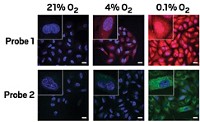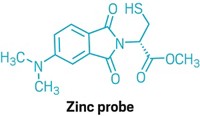Advertisement
Grab your lab coat. Let's get started
Welcome!
Welcome!
Create an account below to get 6 C&EN articles per month, receive newsletters and more - all free.
It seems this is your first time logging in online. Please enter the following information to continue.
As an ACS member you automatically get access to this site. All we need is few more details to create your reading experience.
Not you? Sign in with a different account.
Not you? Sign in with a different account.
ERROR 1
ERROR 1
ERROR 2
ERROR 2
ERROR 2
ERROR 2
ERROR 2
Password and Confirm password must match.
If you have an ACS member number, please enter it here so we can link this account to your membership. (optional)
ERROR 2
ACS values your privacy. By submitting your information, you are gaining access to C&EN and subscribing to our weekly newsletter. We use the information you provide to make your reading experience better, and we will never sell your data to third party members.
Biological Chemistry
Bacteria Respond To Lanthanides
Applications could include sequestration and remediation of environmental lanthanides
by Stu Borman
February 18, 2013
| A version of this story appeared in
Volume 91, Issue 7
By developing the first bacteria that sense and respond to lanthanides, researchers have advanced the use of living cells to detect and absorb specific metal ions and respond to those ions by changing their functional activity. The work could lead to increased use of bacteria and other live cells to collect lanthanides and other elements in the environment for remediation and other applications. Earlier, Barbara Imperiali at MIT, Karen Allen at Boston University, and coworkers developed lanthanide-binding tags, peptide sequences that selectively bind lanthanide ions with high affinities. Chuan He of the University of Chicago and coworkers have now genetically engineered the tags into live bacteria in a way that enables the microorganisms to sense and respond to lanthanides in the environment (J. Am. Chem. Soc., DOI: 10.1021/ja312032c). In addition to sequestering lanthanides, the engineered bacteria can respond to the metals with gene-expression changes that modify their behavior, such as causing them to move toward areas of greater lanthanide concentration. The system should also be applicable to live-cell sensing of other metal ions, the researchers note.





Join the conversation
Contact the reporter
Submit a Letter to the Editor for publication
Engage with us on Twitter